
3. North Umpqua River – Marsters Segment
Summary
Length 3.6 miles one way
Difficulty Moderate
Season Year round
Elevation range 1,460 – 1,650 feet
Human imprint High (highway nearby)
Information Umpqua National Forest (North Umpqua Ranger District)
Primary old growth features
Low-elevation, post-fire old growth survivors.
Description
“The North Umpqua River Trail parallels the famous river for 79 miles, linking the low-elevation forests on the western margins of the Cascades to the Pacific Crest Trail. The trail showcases the breathtaking beauty of the North Umpqua River while traversing a wide range of ecological conditions, including patches of attractive old forest and scattered ancient giants. Although many trail segments include small patches of old growth, the most impressive stands are found in three segments along the western half of the trail.”
Those are words from my 2003 book on old-growth hikes in the Cascade Range. While still true to some degree, this portion of the North Umpqua canyon has been hammered by repeated fires over the last 25 years, including:
Apple Fire 2002 19,139 acres
Rattle Fire 2008 20,443 acres
Williams Creek Fire 2009 8,405 acres
Cable Crossing Fire 2015 2,155 acres
Happy Dog Fire 2017 34,241 acres
Fall Creek Fire 2017 4,946 acres
Archie Creek 2020 131,885 acres
Jack Fire 2021 33,747 acres
All three segments of the North Umpqua River Trail featured in my earlier book have been burned over by recent wildfire, some areas multiple times. Not all portions of these fires burned severely, but old-growth forests are becoming increasingly difficult to find. The Archie Creek Fire was especially damaging to old forests with large areas of near complete forest mortality. Many areas of reburns are also present where a fire burns over the same area of ground recently burned by an earlier fire. Reburns are often of very high severity.
It is important for hikers and forest lovers to visit these forests and observe recent fire effects. Burned old forests have their own diversity and beauty, and serve important ecological functions. But post-fire forests are often far different from pre-fire forests, and what is lost may take centuries to recover. Recent trends in fire occurrence and severity are almost certain to continue for the foreseeable future, and recently burned forests are increasingly common across the Cascades.
The Marsters trail segment of the North Umpqua Trail (1414) highlights both moderate and severe fire effects in a mixed-age old forest, including a significant number of thick-barked survivors. The Happy Dog Fire, part of the Umpqua North Complex of lightning-ignited fires in August of 2017, burned over the entirety of the Marsters trail segment. Large, remnant Douglas-fir and sugar pine stand along much of the trail supplying seed for a slowly regenerating post-fire forest. A greater number of legacy trees are scattered across lower slopes near the river. The largest trees can be found on riparian terraces below the trail about a mile or so from the western trailhead, where Douglas-fir commonly reach 5 to 6 feet in diameter. A small patch of old trees, including a statuesque sugar pine standing above the trail, reside near the Deception Creek crossing.
30 years of change
Very high degree of change throughout all three trail segments due to repeated wildfires.
How to get there
From Interstate 5, take Exit 124 at Roseburg and head east toward Diamond Lake on the North Umpqua Highway (State Route 138). Travelers from the north may want to take the North Bank Road to cut a few miles off the route (Exit 135 to Wilbur). To reach the western trailhead of the Marsters segment, turn right (south) onto Forest Road 4750 by the Horseshoe Bend Campground approximately 29 miles east of Glide. Continue straight over the bridge. Trailhead parking is on the right in four-tenths mile; the trail is on the left.
The Marsters trail segment can also be accessed from the east. Take FR 4770 towards Twin Lakes just after crossing the Marsters Bridge approximately 3 miles past the turnoff for the western trailhead. The trailhead is on the right a quarter mile later.
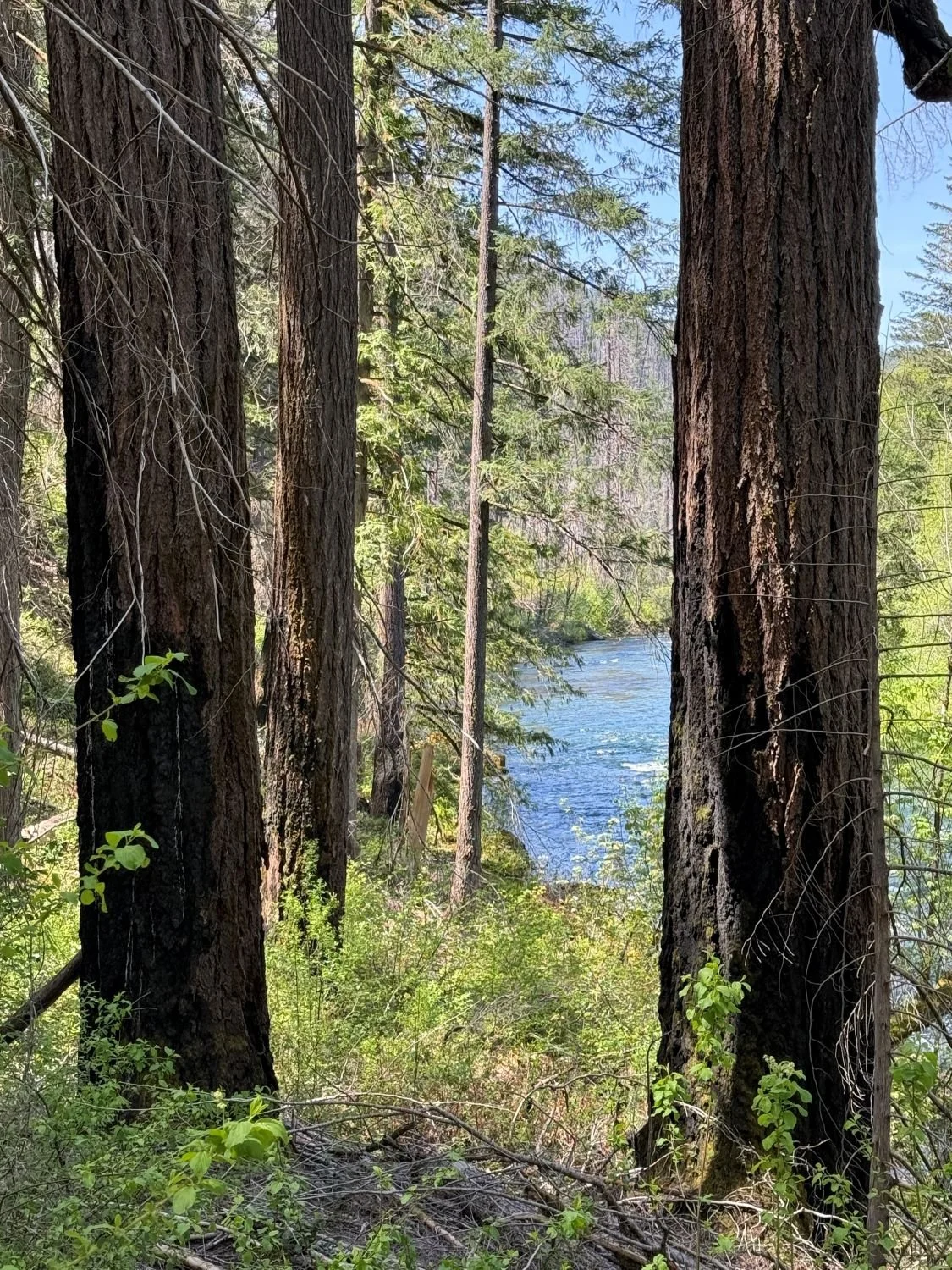
Fire-scorched Douglas-fir along the North Umpqua River
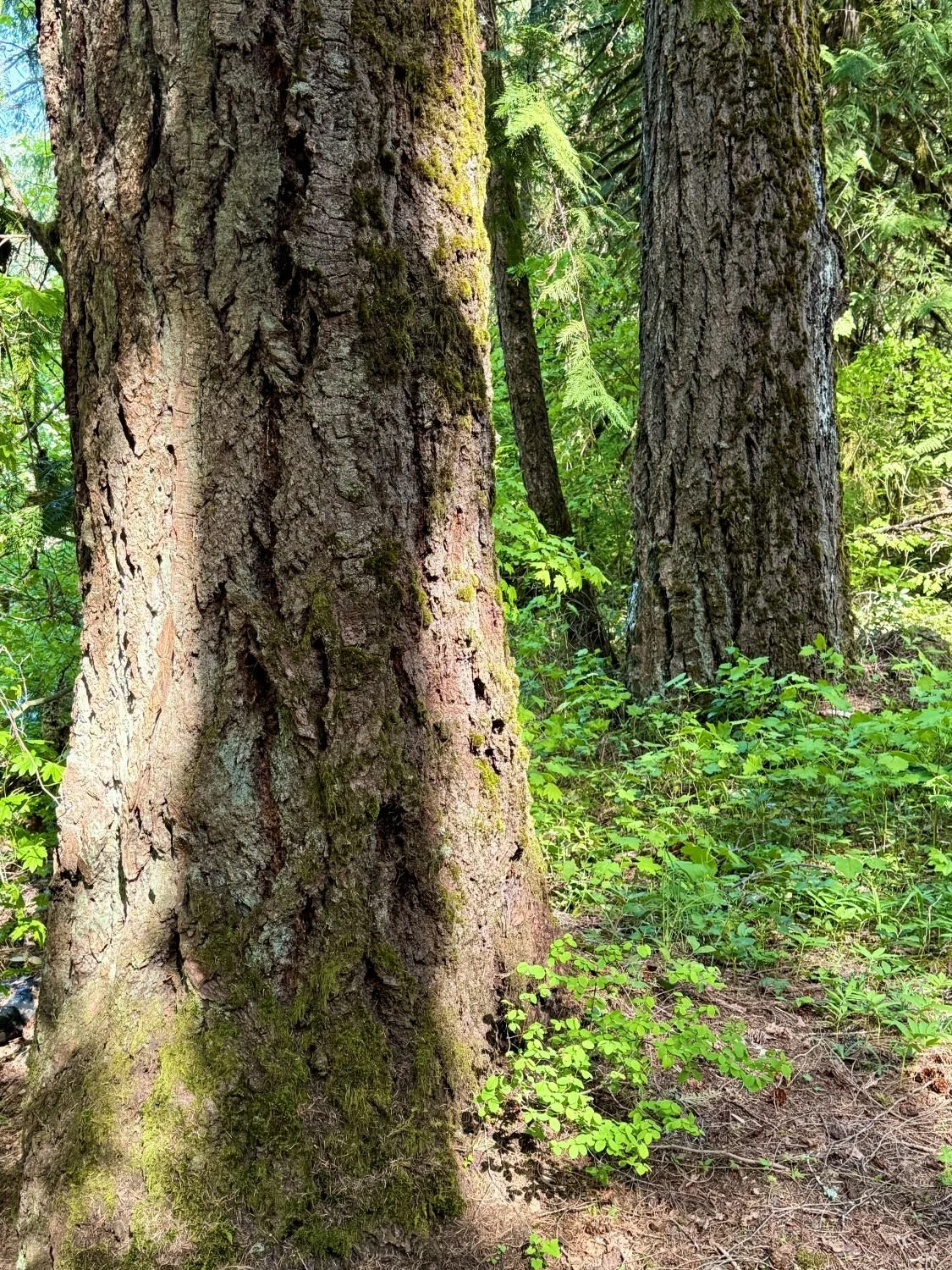
Lightly burned old Douglas-fir
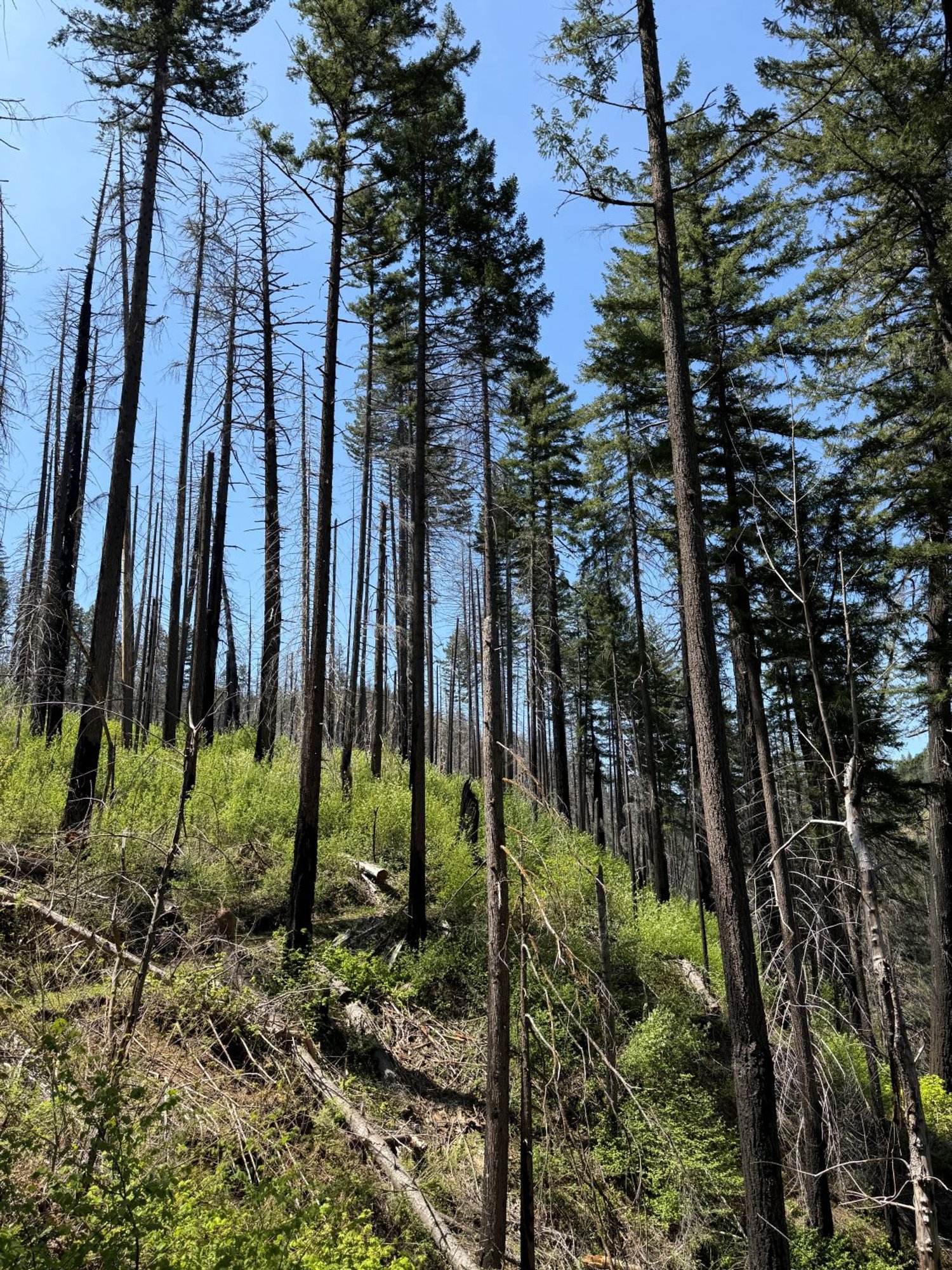
More survivors along lower slope
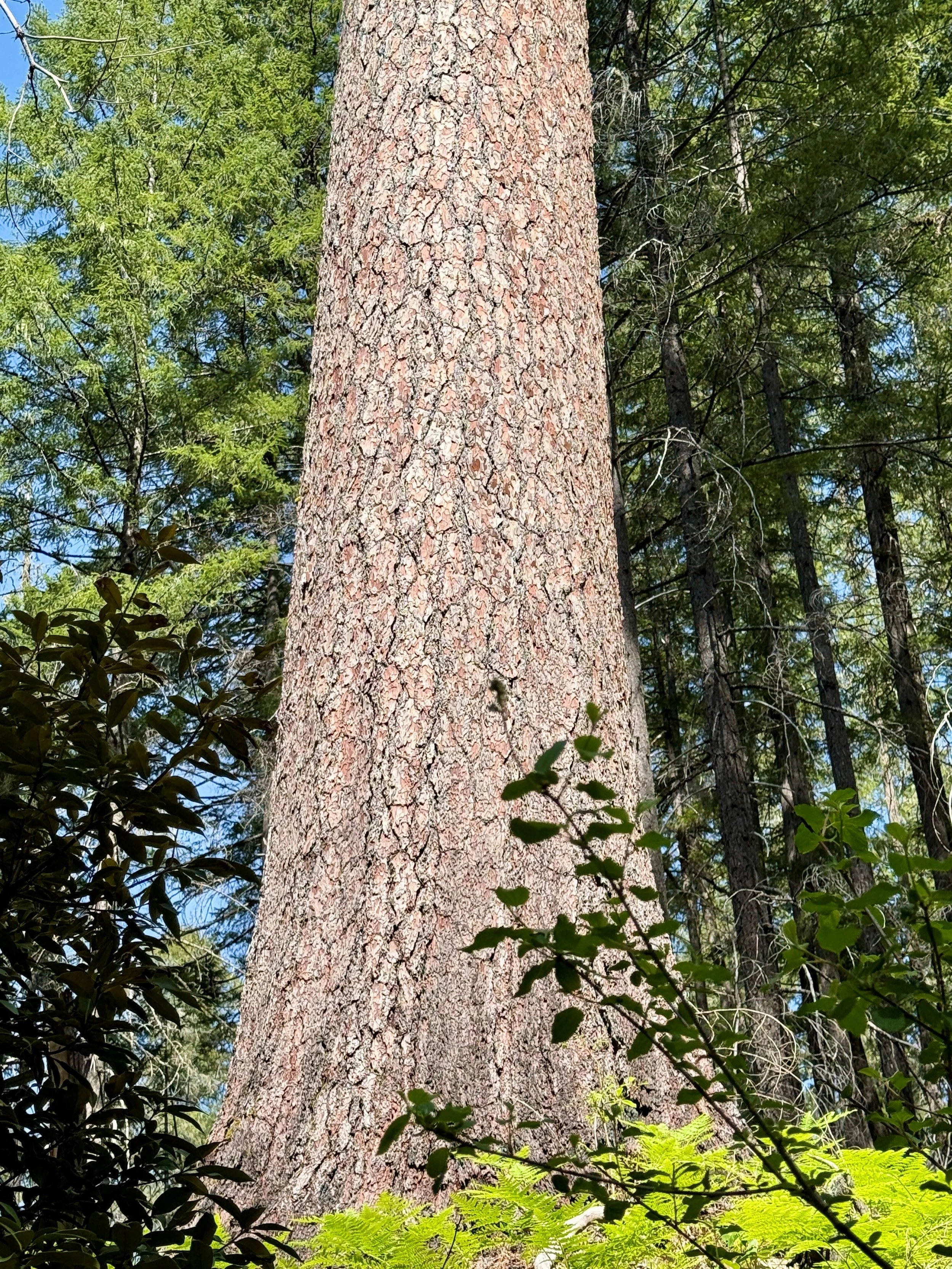
Giant sugar pine
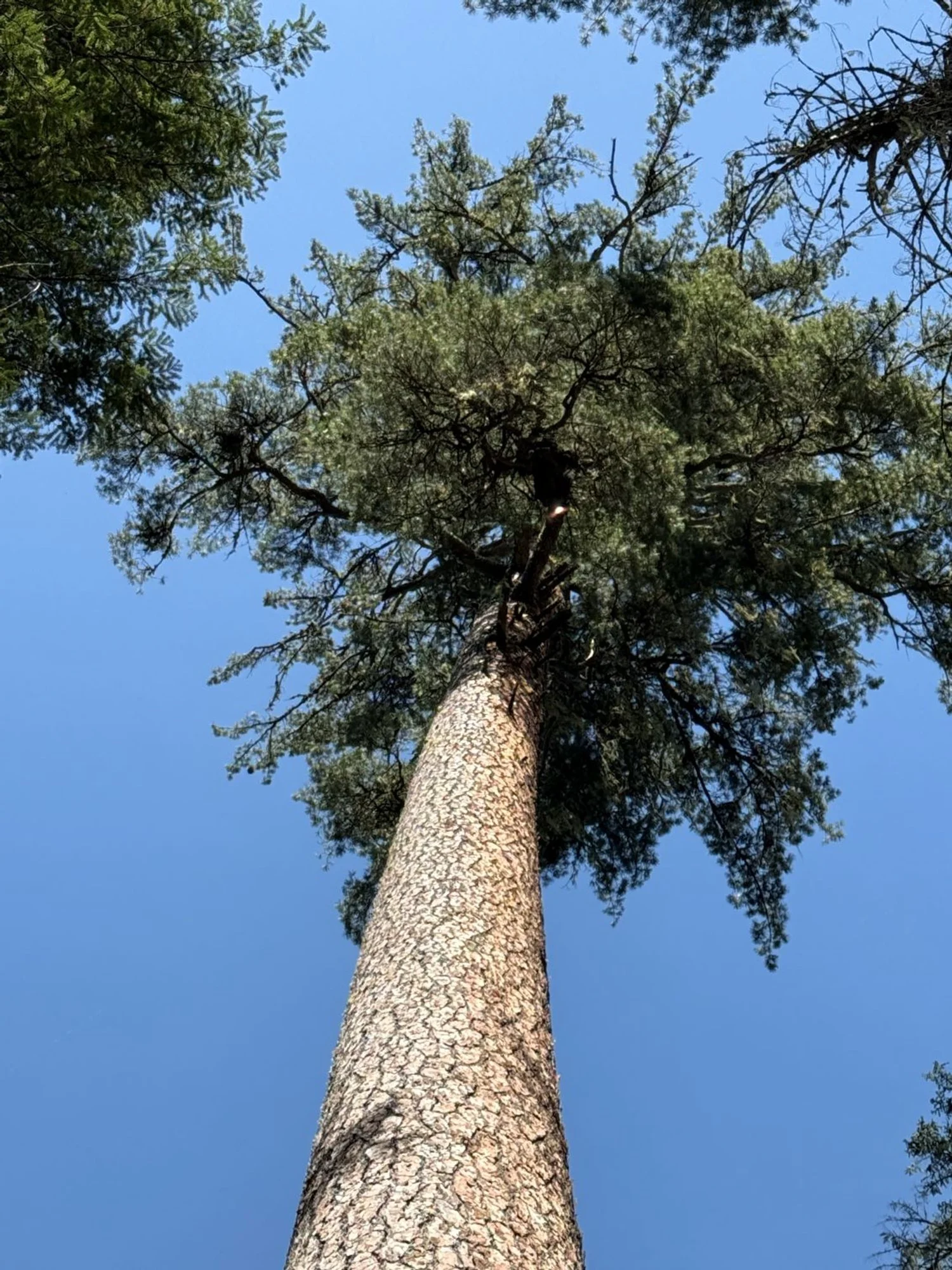
Towering sugar pine
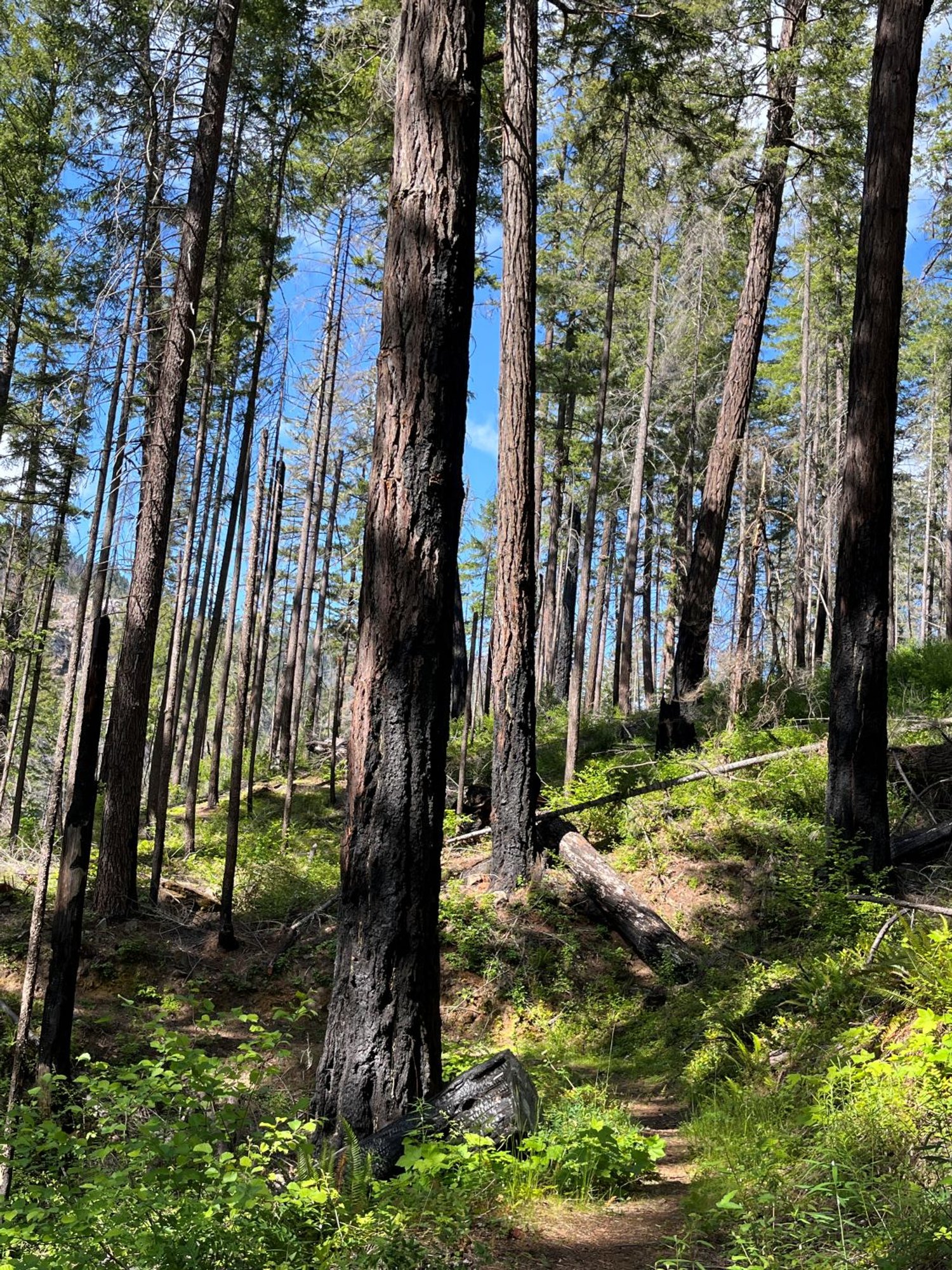
Mixed severity

Formerly old growth (Mott)

Mixed severity (Mott)

Tioga segment
